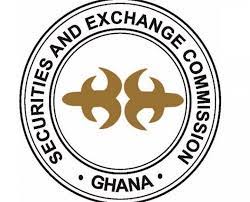There are a number of businesses, particularly small and mid-size enterprises (SMEs) in Ghana which do not consider the impact their capital structure has on their financial performance, market value and shareholders’ wealth. Most often, SMEs in Ghana mainly focus on getting capital to fund their projects or activities without really thinking through the impact (positive or negative) the mechanism used to raise that capital has on their business, therefore causing them future problems.
Made up of debt and equity, capital structure is the utmost business decision that determines the overall cost of capital and, eventually, the market value of a company. In my view, there are three types of capital structures: thus, all debt no equity; all equity no debt; and a proportion of debt and equity. Having to juggle between long-term and short-term interests of a company in terms of ability to retain earnings; satisfy shareholders; maximise value and improve the company’s credit-worthiness shows the gargantuan effect capital structure has on a company’s financial performance and shareholders’ wealth.
In an ideal market, it is imperative for companies to be levered – that is, combine both debt and equity. Deciding whether to be levered or unlevered is a decision that is vital for business managers to make, as both debt and equity have their advantages and disadvantages. For instance, debt financing allows owners to retain ownership and control of their business.
It also helps to reduce tax obligation because interest payments are tax deductible expenses in most jurisdictions. But debt has repayment obligations which might negatively affect a company’s credit rating when it defaults with debt repayment. Equity financing on the other hand will most likely lead to less control for business owners. Also, there is a strong notion that equity financing is comparatively costly to debt financing in the long-term.
The quest to determine the best capital structure in order to increase firm value lies within several factors: including size of company, profitability, risk, liquidity, market size, cost of research and development, real assets and others. This affirms that not getting its capital structure right might be detrimental to a company’s future.
Over the years, various approaches – such as The Net Income Approach, Net Operating Income Approach, Traditional Approach, Modigliani & Miller Approach, Pecking Order Theory, Trade-off Theory and Agency Cost – have been developed to throw more light on the various dynamics of capital structure. For instance, the Modigliani-Miller theory states that the market value of a firm does not depend on its capital structure but rather on forecasted upcoming revenue in an ideal market, assuming there are no taxes.
The Pecking Order Theory emphasises that due to asymmetric information, firms ought to opt for financing using internal funding sources such as retained earnings as their first option and then use debt financing as their second option before equity financing as a last option. There is another viewpoint that professes it is cheaper to fund investments with retained earnings than with debt or equity because of the cost of capital. Also, to reduce information failure and other factors, some companies mostly grow or execute projects with internal funding because it is believed a company’s management are more well-informed about their own operations than outsiders such as lenders and investors who most often also set rules of engagement for the company.
The value of a business increases when it is able to decrease Weighted Average Cost of Capital (combination of all sources of a company’s capital—including common stock, preferred stock, bonds, and any other long-term debt) leading to optimal capital structure. It is therefore imperative for businesses that want to increase profitability to pay key attention to their capital structure. This is because when a business adopts the right capital structure – ratio of debt and equity – that maximises return on assets and enables higher profit to be attained and retained, the business can increase its profitability; thereby increasing shareholders’ wealth.
In conclusion, to position a company to be financially superior thereby maximising its value and shareholders’ wealth, there must be an excellent ratio of debt and equity unique to that particular company. It is therefore significant for SMEs in Ghana to focus on this area and plan accordingly to future-proof their businesses.
About the writer:
King is a business strategist with expertise in executing projects and helping companies achieve their goals in diverse industries.










